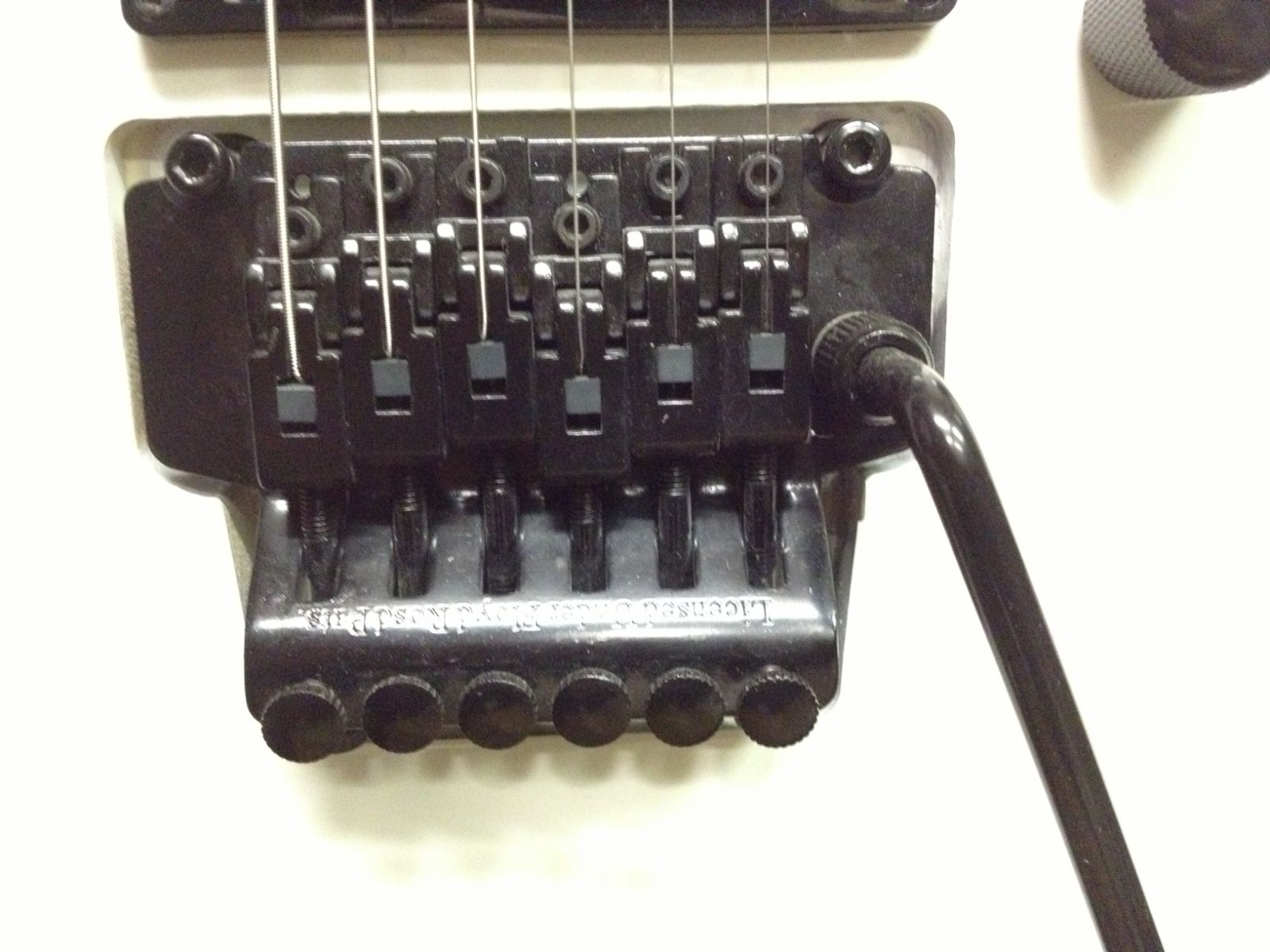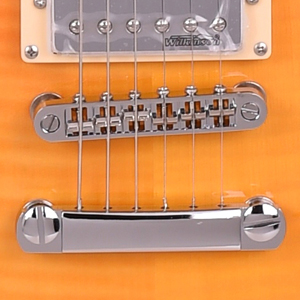Electric Guitar Bridges - What the difference?
Author: Artist Guitars US Date Posted:October 30, '18
Bridges for electric guitars can be divided into two main groups, "vibrato" and "non-vibrato" (also called hard-tail). Vibrato bridges have an arm (called the vibrato or whammy bar that extends from below the string anchoring point. It acts as a lever that the player can push or pull to change the strings tension and, as a result, the pitch. This means that this type of bridge produces a vibrato rather than what some call to be tremolo, but the term 'tremolo' is deeply entrenched in popular usage and some use the word tremolo over vibrato. Non-vibrato bridges supply an anchoring point for the strings but provide no active control over string tension or pitch. A small group of tremolo bridges has an extended tail (also called longtail). These guitars have more reverb in their sound, because of the string resonance behind the bridge.
All bridges have advantages, depending on the playing style, but, in general, a non-tremolo bridge is thought to provide better tuning stability and a solid contact between the guitar body and the strings.
Vibrato bridges
Generally, the more contact the bridge has with the body (i.e. the lower the position), the better the sound transfer will be into the body. A warmer sound with increased sustain is the result.
Vibrato bridges usually need to be suspended in some way, which reduces contact. Most tremolo designs today use a group of springs in the guitar body, which oppose the tension of the strings. Some players feel that the vibration of the springs affects resonance in a way that makes the guitar sound better; others disagree. Naturally, it all depends on personal preference and the musical style of the individual player.
Since many playing styles make use of a tremolo obligatory, most solid-body guitars today are manufactured with one of two kinds of tremolos:
Non-Locking Tremolo
Non-locking (or vintage) tremolos are the bridges found on all guitars manufactured prior to the advent of the Floyd Rose locking tremolo in the late 1970s and many (typically cheaper) guitars manufactured thereafter. For many playing styles, vintage tremolos are a good choice because they are easy to use and maintain and have very few parts. Some people feel that they can also provide a better degree of sound transfer, especially with tailpiece type tremolos such as the Bigsby. However, "Synchronized Tremolo" type found on the Fender Stratocaster is balanced against a set of screws in much the same manner as a locking tremolo and offers little improvement in the way of sounds transfer. Given that this type of tremolo is installed on solid body guitars the degree to which sound transfer affects the sound that the instrument produces is minimal. Also, keeping a guitar with a non-locking tremolo in tune can be difficult. The most common types of non-locking tremolos are the "Synchronized Tremolo" type and an almost endless stream of copies. The Bigsby vibrato tailpiece is another option, although that type has largely fallen out of favour.
Locking Tremolo
Another type of tremolo is the locking tremolo. These bridges have a sort of vise in each saddle which clamps the string into place (usually with an Allen key). The end of the string has a clamp, which holds the string in place, stopping it from slipping. This is especially useful for songs that require tapping or heavy/hard playing styles. Once set up for tuning stability, locking tremolos are very good. However, their fulcrum points offer extremely minute contact with the body, which may disturb sound transfer.
Non-Tremolo bridges
It is generally thought that non-tremolo bridges offer better transfer of string vibration into the body. This is due to direct contact of the bridge to the guitar's body.
These bridges are bolted directly to the guitar body and, assuming good quality, limit longitudinal string movement completely. Therefore tuning stability is assured.
The improved transfer of string vibration into the body has an effect on the sound, so guitars with this type of bridge have different characteristics than those with tremolos even when it is removed. There are no springs in the body or a cavity to accommodate them, which also affects resonance.
Thanks for reading our report, to give you even more content check our pages below:
- Join our newsletter to receive hot tips and advice, as well as new products and special offers
- Visit our YouTube channel for some great Demo’s & Tutorials
- Our facebook page to join our community and see news updates, specials and more
- Visit our website
sales@artistguitars.co.uk or call us on 0-808-189-0084



 Tunomatic Bridge on our our LP59 guitar
Tunomatic Bridge on our our LP59 guitar